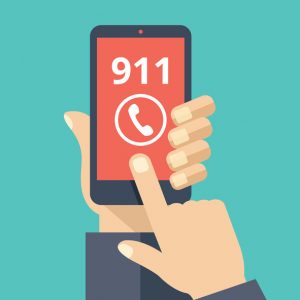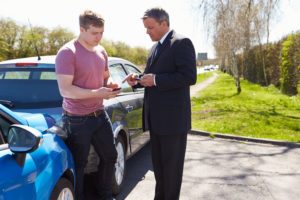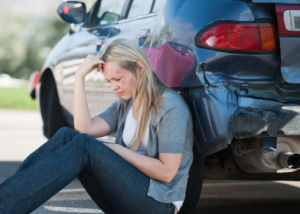Even the most cautious and attentive drivers can find themselves in a car accident situation. In Utah alone, there were over 62,000 car accidents in 2016. That is why it is better to be prepared and know what to do ahead of time if the unfortunate should occur. So what do you do after a car accident?
1. Check for Injuries
The first thing to be done after a collision of any kind is to check for injuries. If it is a minor car accident and you are able to check yourself over first. Are you bleeding? Can you move your limbs without pain? Are you having trouble breathing? Once you’ve established your injury level check on any passengers that are in the vehicle with you. If you are able to exit the vehicle without assistance and it appears safe to do so (there are no hazards like fire, electrical, oncoming traffic) then you can check on the other parties involved in the accident to see if they have sustained any injuries.
There can be many side effects for someone who has been in a car accident, even a simple fender bender. Although most of these usually appear days or even weeks after the accident, watch for any of these common post car accident symptoms:
- Minor or Severe Headaches
- Bruising, Swelling, And Stiffness
- Muscle Pain Particularly In The Neck and Shoulder Area
- Tingling or Numbness In Your Extremities
- Nausea or Abdominal Pain
And less common but still possible:
- Changes to your Moods, Behaviours, Appetite and Sleeping Patterns
Should any of these occur it is wise to seek medical council.
2. Call 911 or The Police

After you have assessed the injury level of yourself and everyone involved in the car accident your next step is to call 911, even if it appears that everyone is okay it is best to call them since injuries can take some time to materialize. If you have been in a very minor fender bender and all parties agree that there are no injuries that require medical attention you can choose to call the police directly instead of emergency services. Every accident is different, so use your judgment, and err on the side of caution.
And as a side note; although a car accident scene can be very chaotic, try to obtain badge numbers and names of the police officers and other rescue workers that you come into contact with for reference later, in case you have to go to court.
3. Get To Safety
Depending on the circumstances of the car accident, it might be more prudent to put this step ahead of calling 911. If you are blocking traffic but your car is still drivable and you can still safely maneuver off to the shoulder of the road take the time to do so. This would especially be the case in a minor car accident or fender bender where remaining in the middle of the road would leave you exposed to being potentially hit by another driver. If however your car is no longer drivable, determine whether it is safer to simply stay in your vehicle until rescue teams arrive. Don’t ever risk trying to cross busy freeway lanes on foot.
For more tips for highway safety click here.
4. Exchange Insurance Information

This is the step that some people can find intimidating when dealing with a car accident; not wanting to do the wrong thing. In a car vs car accident, make sure to exchange insurance information with the other driver, even if the accident appears minor. Be careful what you say since anything can be used against you in court. Tensions are high at the scene of a car accident and it isn’t the right time to try to determine fault. Make sure you write down the other drivers:
- Full Name
- Address
- Phone Number
- Car Ownership and Insurance Information
It is also extremely helpful to get the contact information of any bystander witnesses as well, as they may prove a valuable reference if the other party decides to make statements contrary to what really happened.
You should also call your auto insurance company as soon as possible after the accident to get vital instructions from them.
5. Take Pictures of the Auto Accident
Once all the other steps have been completed if you are able to, try to document as much of the car accident as possible by taking your own pictures. Adjusters and investigators all have their own initiatives and agendas. To protect yourself and your interests, it’s a good idea to take as many pictures of the accident as you can in case of a discrepancy later on. Good pictures to try to capture at the scene of a car accident would be:
- Any damage sustained to your vehicle
- Any damage sustained to the other vehicle
- The conditions of the accident (ex. How far apart are the two vehicles, are there any other obstructions involved)
- The road conditions (ex. Snow, potholes, etc.)
- Any street lights or signage in relation to the accident (ex. Stop signs), including posted speed limits
- Their Insurance Documents For Reference In Case Something is Written Down Incorrectly
Added Bonus Tip
 If you have been in an accident that is not your fault then it is best to let your insurance company deal with the other involved person’s insurance company. But what if you are at fault in an auto accident?
If you have been in an accident that is not your fault then it is best to let your insurance company deal with the other involved person’s insurance company. But what if you are at fault in an auto accident?
One final trick we teach our customers is to pretend that you were just involved in a car accident that is your fault. What kind of insurance coverage do you WISH you would have purchased? It’s a good idea to review your auto insurance policy with your independent insurance agent before an accident happens. Your insurance agent can inform you of any details you need to follow plus provide options for certain situations; for example, your policy may cover towing or roadside assistance. as well as what is GAP insurance?
The selection of an insurance company can be quite daunting. At Keystone Insurance Services, we help you find the right fit for your individual needs, whether it be for your auto insurance policy or something more. Contact us today if you have any other questions about what to do in the case of a car accident or if you are looking for a new insurance policy.
Good luck and safe driving!

